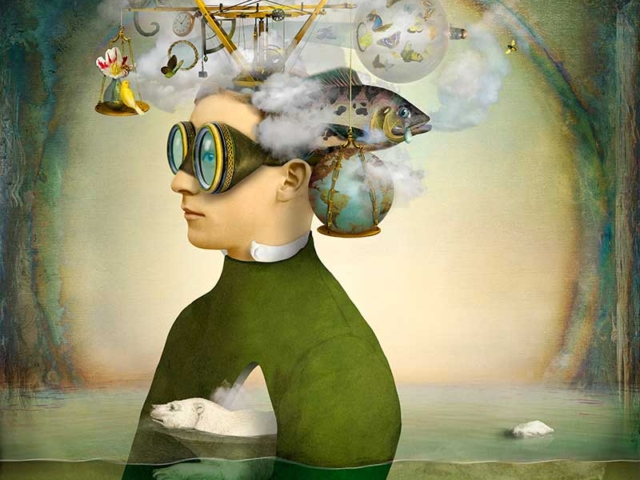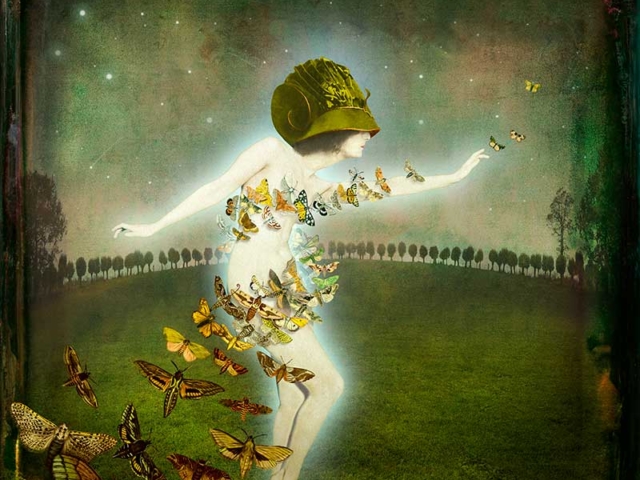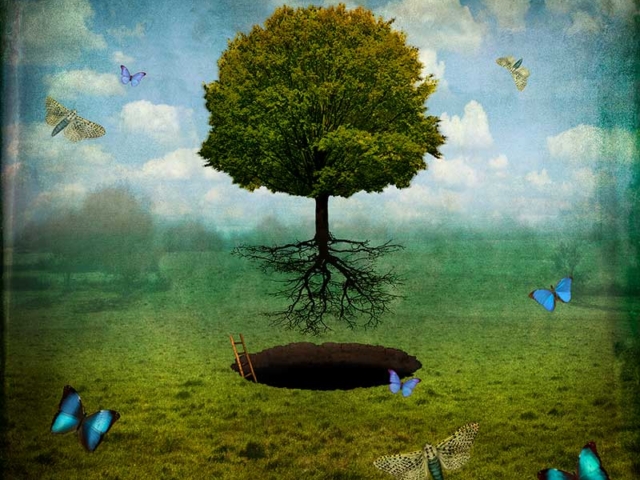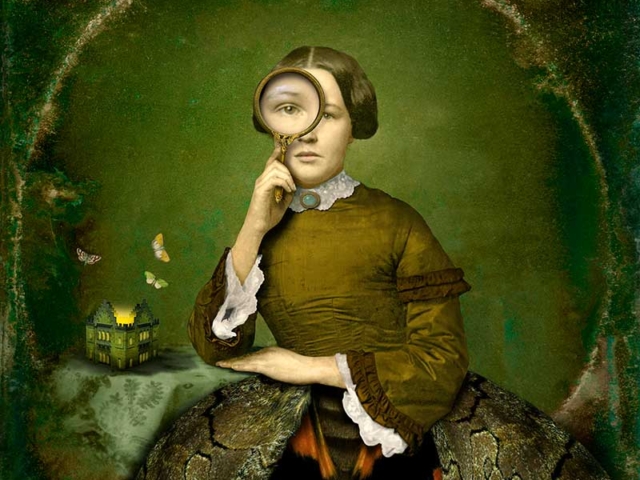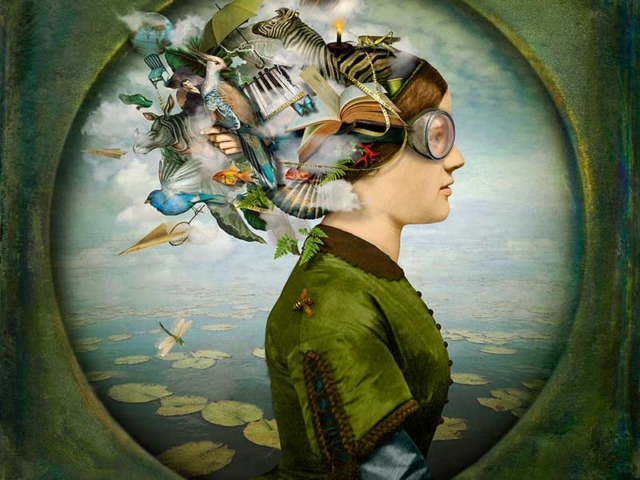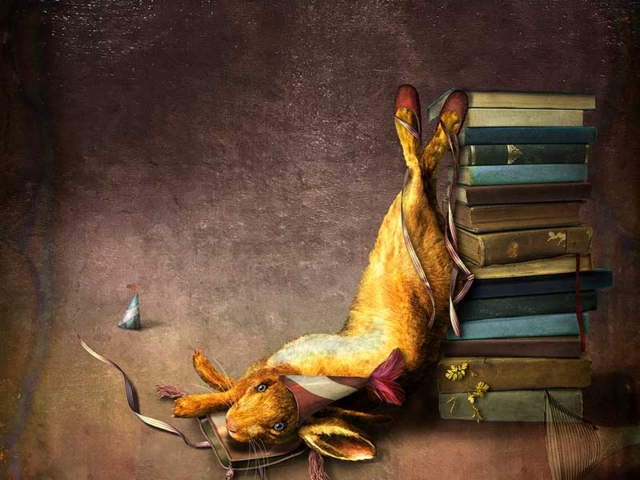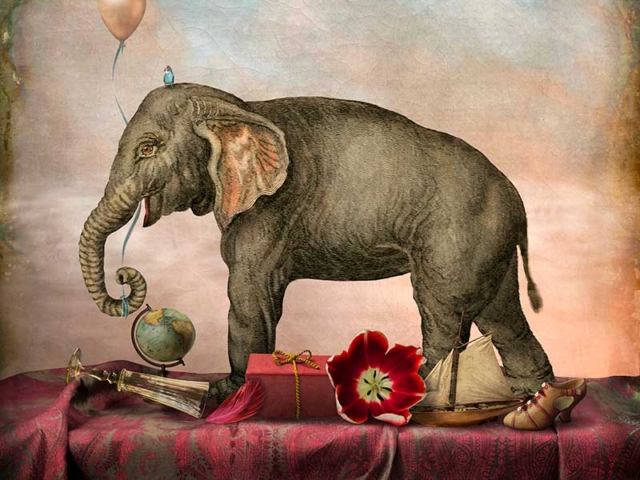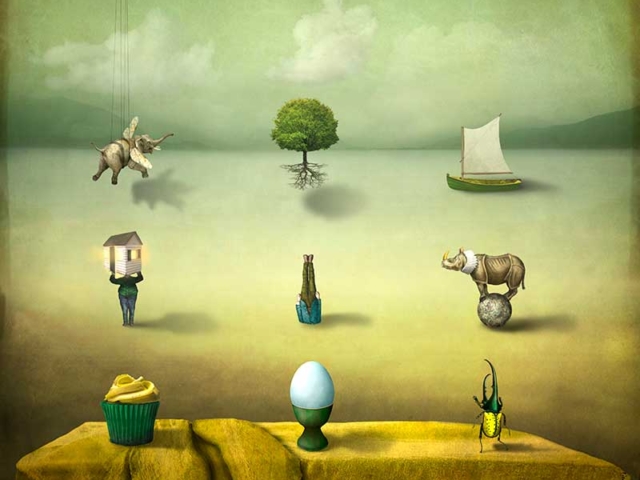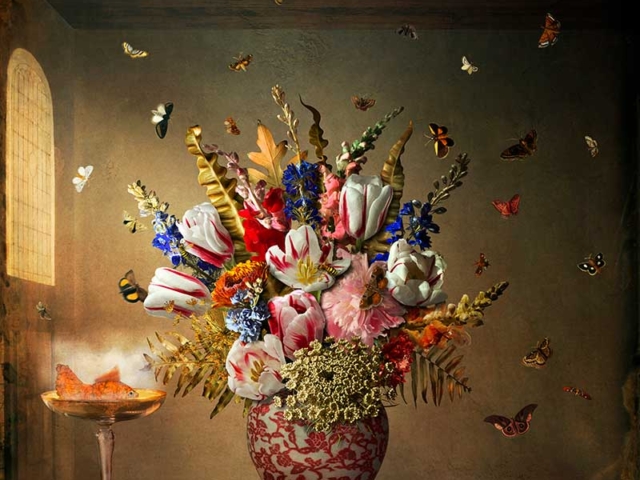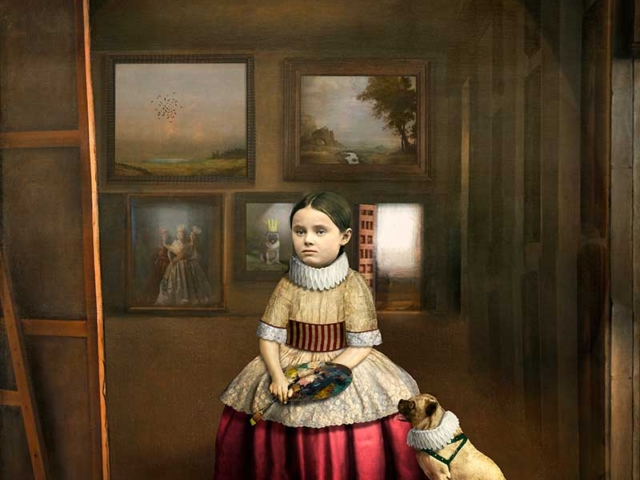Maggie Taylor

About
Maggie Taylor (https://www.maggietaylor.com/)Maggie Taylor is an artist who lives at the edge of a small swamp on the outskirts of Gainesville, Florida. She was born in Cleveland, Ohio, in 1961, and moved to Florida at the age of 11. Her childhood was spent watching countless hours of situation comedies and science fiction on television; later she received a philosophy degree from Yale University. A little later she got a master’s degree in photography from the University of Florida. Her digital composites have been widely exhibited and have been collected by many museums including: The Center for Creative Photography, Tucson; The George Eastman House, Rochester; Harn Museum of Art, Gainesville; Harry Ransom Center, The University of Texas, Austin; The High Museum, Atlanta; Museum of Fine Arts, Houston; Ogden Museum of Southern Art, New Orleans; The Art Museum, Princeton University, Princeton; The Cleveland Museum of Art, Cleveland; The Fogg Art Museum, Harvard University, Cambridge; The Nelson-Atkins Museum of Art, Kansas City; The Santa Barbara Museum of Art, Santa Barbara, and the Museum of Photography, Seoul. Maggie Taylor’s work is featured in the following books: Adobe Photoshop Master Class: Maggie Taylor’s Landscape of Dreams, Peachpit Press, Berkeley, 2005; Solutions Beginning with A, Modernbook Editions, Palo Alto, 2007; Alice’s Adventures in Wonderland by Lewis Carroll, Modernbook Editions, Palo Alto, 2008; No Ordinary Days, available from the University Press of Florida, 2013; and Through the Looking-glass, And What Alice Found There, Moth House Press, Gainesville, 2018.
Gallery
LACP Interviews Maggie Taylor
LACP asks Maggie Taylor ten questions about her background, career in and beliefs about photography.
Los Angeles Center of Photography: What kind of photographer are you?
Maggie Taylor: Although I was trained in the traditional darkroom and spent years making both black and white and color prints, I transitioned to the computer in 1997. I think of my work as samples from the real world woven together in the form of digital collage. I am basically a really bad, casual photographer collecting images from the real world and scans from my flatbed scanner to use as raw materials.
LACP: How long have you been shooting?
MT: In 1976 I had got my first Kodak instamatic and loved photographing my pets! My first darkroom class was ages ago: 1980 or 1981 at Yale as an undergrad. These days I only use my iPhone camera.
LACP: Where did you get your training?
MT: At Yale I studied philosophy, but also took as many photography classes and art history classes as I could. Later, in 1987, I got an MFA in photography at the University of Florida in Gainesville.
LACP: When did you know you wanted to devote your life to photography?
MT: While working one summer at a photography gallery in New York City I decided it would be a great idea to go back to graduate school and spend more time developing my own style. Little did I know at the time that the other art students in my class at the University of Florida would all be combining multiple media and I just wanted to make “straight” images. It took some time, but working in the still life genre for about 10 years became my thing. I love photographing object more than people.
LACP: Did you ever come close to giving up?
MT: Not yet, but many times I take a bit of time off to reflect, collect, and then come back to making images reinvigorated. I can’t work at the same pace all the time. Life has its ebbs and flows, and so does my creative practice.
LACP: Have you sacrificed anything by being a photographer?
MT: I think not. I can’t imagine doing anything else.
LACP: What have you gained by being a photographer?
MT: I suppose I have a slightly different way of looking at the world: although not what photographers would traditionally say. My digital collage work makes me look at things and wonder what else they could be.
LACP: What classes do you teach at LACP?
MT: Digital compositing with Photoshop.
LACP: What do you love most about teaching?
MT: Sharing techniques that help other artists solve problems and make better images is very rewarding. But I also love connecting with people and learning about their visual journeys.
LACP: What advice would you give someone who is thinking about making a career in photography?
MT: Learn as much as you can! You never know what direction your work will take and what will inspire you next. Be prepared for frustration and hard work—and for many people to say ’no’ to your work. That is all part of the process. Have confidence in yourself and your art.
